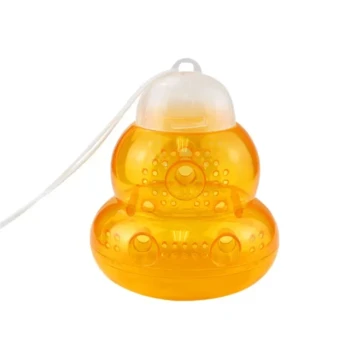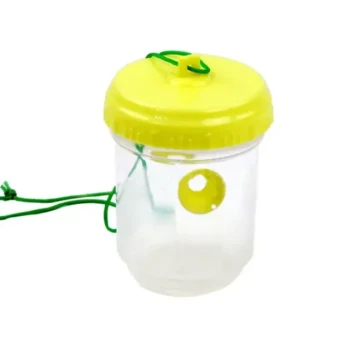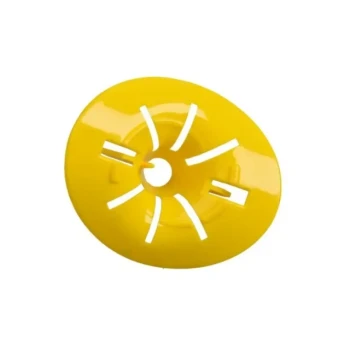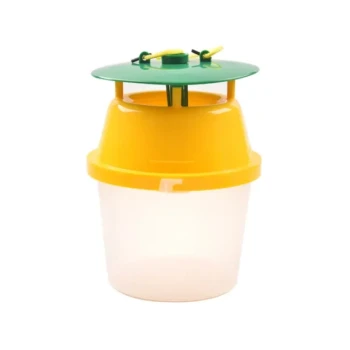The primary chemical-free options for trapping hive beetles are mechanical in-hive traps that use a non-toxic substance to capture and kill the pests. These include reusable tray-style traps filled with vegetable oil or diatomaceous earth, disposable fibrous sheets like Beetle Be Gone, and simple oil pans placed under a screened bottom board.
The core principle behind effective, chemical-free hive beetle control is not to eliminate every beetle, but to manage their population by exploiting their natural behavior—their tendency to hide from bees and seek out attractants—using simple, mechanical traps.
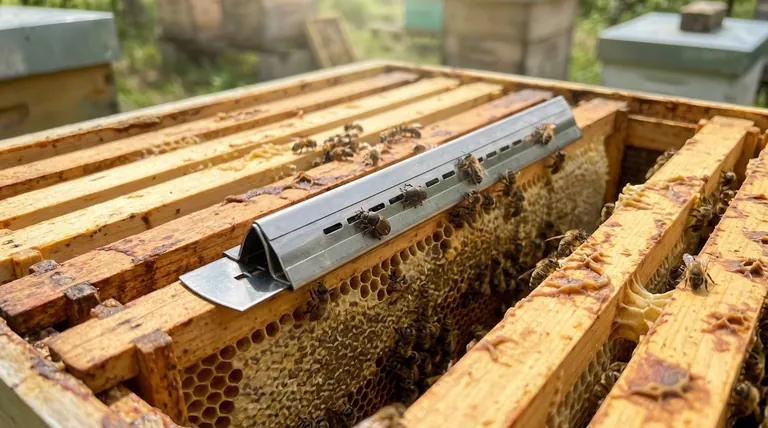
How In-Hive Traps Work
Exploiting Beetle Behavior
Small hive beetles (SHB) are programmed to flee from bees and hide in the dark cracks and crevices of a hive.
Most chemical-free traps are designed to mimic these hiding spots. They create a small, dark enclosure that is accessible to beetles but too small for bees to enter.
The Trapping Mechanism
Once inside, the beetles encounter a substance that traps and kills them. This is typically a simple, non-toxic material.
Vegetable oil is the most common and effective agent. Beetles are drawn to the scent, fall into the oil, and drown.
Diatomaceous earth (DE) can also be used. This fine powder abrades the beetles' exoskeletons, causing them to dehydrate and die.
Key Types of Chemical-Free Beetle Traps
Reusable Tray Traps
These are small, plastic traps, often with multiple trays or compartments, designed to hang between the frames in the top hive box.
You fill the compartments with vegetable oil, DE, or a specific beetle bait (often a mix of pollen and yeast to attract them). The trap's slatted design allows beetles in while keeping bees out.
Beetle Be Gone & Similar Sheets
These are all-natural, cloth-like sheets, similar to the material in certain types of cleaning wipes.
You place these sheets on the top bars of the frames, where beetles tend to congregate and hide. The beetles' legs get caught in the fibers of the cloth, permanently trapping them.
Bottom Board Oil Pans
This method is considered highly effective, especially for hives with a screened bottom board.
A tray or pan filled with a shallow layer of vegetable oil is placed underneath the screen. As bees chase beetles, the pests fall through the screen and are captured in the oil below.
Understanding the Trade-offs
Placement is Critical
A trap's effectiveness depends entirely on its location. Beetles hide from bees, so traps must be placed where beetles congregate—typically in the upper corners of the hive or between the outer frames. A poorly placed trap will catch nothing.
Regular Maintenance is Required
These traps are not a "set-it-and-forget-it" solution. Oil traps must be cleaned and refilled regularly, as they can become clogged with dead beetles and hive debris. Beetle Be Gone sheets must be removed and replaced once they are full.
A Tool for Control, Not Eradication
Chemical-free traps are an excellent tool for managing and reducing the beetle population to a level your colony can handle. They will not, however, eliminate every single beetle from the environment.
Making the Right Choice for Your Hive
A strong, healthy colony is always the first line of defense, but traps provide critical support.
- If your primary focus is maximum effectiveness: An oil pan placed under a screened bottom board consistently captures a high number of beetles as they fall.
- If your primary focus is simplicity and reusability: Tray-based traps that hang between frames are easy to install, inspect, and refill during hive inspections.
- If you need a quick, disposable solution: Fibrous sheets are simple to lay across the top bars to trap beetles hiding in the upper part of the hive.
Ultimately, integrating these simple traps into your regular management routine gives your bees a significant advantage in the fight against this persistent pest.
Summary Table:
| Trap Type | Key Feature | Best For |
|---|---|---|
| Reusable Tray Traps | Hangs between frames; filled with oil/DE | Simplicity and reusability |
| Beetle Be Gone Sheets | Disposable fibrous sheets trap beetles | Quick, disposable solution |
| Bottom Board Oil Pans | Pan under screened bottom board; highly effective | Maximum effectiveness and high capture rate |
Protect Your Apiary with Professional-Grade Solutions
Are you a commercial apiary or beekeeping equipment distributor looking for reliable, bulk supplies for chemical-free pest management? HONESTBEE specializes in wholesale beekeeping supplies and equipment, including durable, reusable hive beetle traps designed for heavy use.
We help you maintain healthy, productive colonies by providing the tools for effective integrated pest management. Let us support your operation with high-quality products and competitive pricing.
Contact HONESTBEE today to discuss your wholesale needs and discover how our supplies can strengthen your defense against hive beetles.
Visual Guide

Related Products
- Reusable Aluminium Beetle Trap for Small Hive Beetles Silver Bullet
- Black Plastic Beetle Barn Hive Beetle Trap for Beehives
- Removable Washable Hive Beetle Trap Attractants for Small Hive Beetles
- Reusable Clear Small Hive Beetle Traps for Beehives Beetle Trapping Tools
- Plastic Beetle Blaster Trap Beekeeping Tools and Supplies
People Also Ask
- How should filled beetle traps be handled? Safely Remove and Dispose to Protect Your Hive
- What are the steps for installing hive beetle traps? A Guide to Effective Beetle Control
- Why are hive beetle traps important for beekeepers? Protect Your Hive from a Devastating Infestation
- Where is the ideal placement for Beetle Blasters in a hive? Maximize Control with Strategic Positioning
- What should be avoided when installing Beetle Blasters in a hive? Avoid These 3 Costly Placement Mistakes








